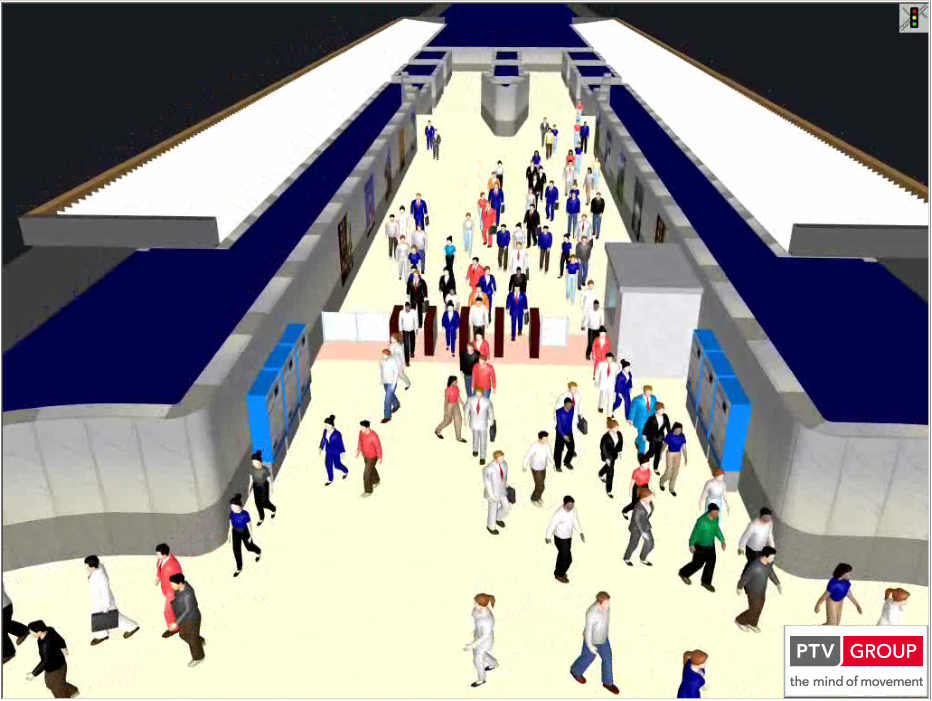Pedestrian simulation
In addition to the simulation of vehicles by default, you can also use Vissim to perform simulations of pedestrians based on the Wiedemann model (Version-specific functions of pedestrian simulation).
However, with the stand-alone product PTV Viswalk, you can simulate pedestrians based on Helbing but no vehicles. You can simulate vehicles and pedestrians only with Vissim and the add-on module PTV Viswalk. You can then choose whether to use the modeling approach of Helbing or Wiedemann.
Movement of pedestrians in the social force model
The movement of pedestrians in Vissim respectively Viswalk is based on the Social Force Model (Helbing and Molnár, 1995). The basic principle of the Social Force Model is to model the elementary impetus for motion of the pedestrians analogous to Newtonian mechanics. From the social, psychological, and physical forces results a total force, which eventually results in an entirely physical parameter Acceleration. These forces arise from the desire of the pedestrian to reach a goal, from the influence of other pedestrians and obstacles in his environment.

Prof. Dr. Dirk Helbing is a scientific advisor for PTV GROUP. Together with PTV GROUP he specially expanded the Social Force Model for the use in Viswalk. This simulation model was validated in three different ways:
Firstly, macroscopic parameters were calculated and adjusted to empirical data. Secondly it was assured that microscopic effects like lane formation (counterflow) and stripe formation (crossing) are reproduced. The resulting animation should be represented as realistically as possible.
The behavior of pedestrians can be divided into three hierarchical levels (Hoogendoorn et al. 2002):
- On the strategic level of minutes to hours, a pedestrian plans his route, generating a list of destinations.
- On the tactical level of seconds to minutes, a pedestrian chooses the route between the destinations. Thereby he takes the network into account.
- On the operational level of milliseconds to seconds, the pedestrian performs the actual movement. He avoids thereby oncoming pedestrians, navigates through a dense crowd, or simply continues the movement toward his destination.
The Social Force Model controls the operational level and parts of the tactical level. You define the settings of the strategic level.
Related topics:
Version-specific functions of pedestrian simulation
Modeling examples and differences of the pedestrian models
Internal procedure of pedestrian simulation
Parameters for pedestrian simulation
Network objects and base data for the simulation of pedestrians
Modeling construction elements
Modeling links as pedestrian areas
Modeling pedestrian compositions
Modeling area-based walking behavior
Modeling pedestrian demand and routing of pedestrians
Visualizing pedestrian traffic in 2D mode
Modeling pedestrians as PT passengers
Fire event based on an FDS file
Defining pedestrian travel time measurement
Superordinate topic:

